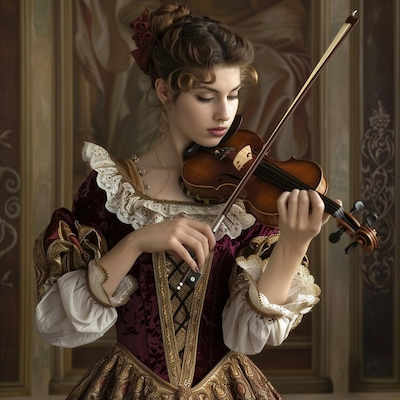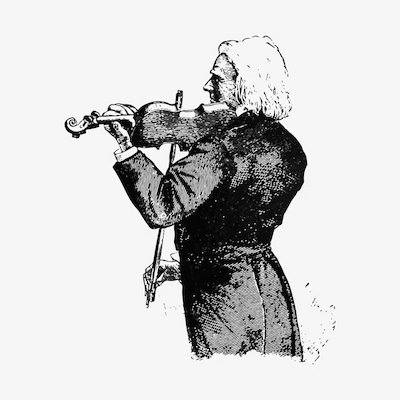
Baroque music is one of the most captivating and influential periods in the history of Western classical music. Spanning roughly from 1600 to 1750, this era was marked by dramatic expression, intricate ornamentation, and the birth of many musical forms that still shape modern compositions today. The Baroque period produced some of the greatest composers of all time, including Johann Sebastian Bach, George Frideric Handel, and Antonio Vivaldi—artists whose works continue to inspire musicians and listeners alike.
What makes Baroque music so distinctive is not just its technical brilliance, but also its emotional depth and theatrical flair. This was a time when music was used to stir the soul, tell stories, and mirror the complexity of human experience. Whether performed in ornate cathedrals or royal courts, Baroque compositions were designed to impress, move, and sometimes overwhelm the audience with their beauty and intensity. Exploring this period offers a fascinating journey into the evolution of music, revealing how sound became a powerful tool of artistic and emotional communication.
How the Stylistic Characteristics of Musical Baroque Work
The stylistic characteristics of Baroque music are marked by a complexity and richness that reflect the social and cultural transformations of the period. This era introduced a new musical expression designed to move and engage listeners. Baroque music is recognized for its elaborate ornamentation, dynamic contrasts, and the introduction of musical forms like the sonata, concerto, and opera. Harmony also evolved, with the use of more complex chords and the exploration of new tonalities—foundational to building a distinct Baroque musical identity.
Another important aspect is how composers began exploring the relationship between music and emotion. The idea that music could express deep and intense human feelings was revolutionary. Composers such as Johann Sebastian Bach and Antonio Vivaldi used techniques like melismas and rhythmic variation to create emotional atmospheres that resonated with audiences. Baroque music also frequently incorporated theatrical elements, reflecting the influence of theater at the time—especially in operas that became increasingly popular.

Benefits of Knowing the Major Composers of Musical Baroque
Knowing the major Baroque composers is essential for understanding the evolution of Western music and its influences across centuries. Composers such as Johann Sebastian Bach, George Frideric Handel, and Antonio Vivaldi not only shaped the Baroque sound but also laid the groundwork for later musical styles. Studying their works reveals how each used different techniques and approaches to enrich the musical repertoire of their era.
Analyzing their compositions allows for a deeper appreciation of Baroque music. Each composer offered a unique perspective: Bach was known for his contrapuntal complexity and spirituality, while Vivaldi excelled at crafting vibrant and memorable melodies. This diversity highlights the many dimensions of Baroque music and its reflection of the human experience.
Another advantage of knowing these composers is gaining insight into the interconnection between music and other arts. During the Baroque period, music, painting, and literature were closely intertwined. Handel frequently collaborated with poets and playwrights, producing works that not only delighted the ear but also told vivid stories. Studying these collaborations enriches our understanding of Baroque culture as a whole.
Finally, studying Baroque composers helps preserve and value a musical legacy that continues to inspire modern genres. Baroque music not only set the stage for later styles like Classicism and Romanticism, but it remains a source of inspiration for contemporary musicians. Delving into these works celebrates their contributions and keeps alive the musical traditions that shaped our cultural landscape.
The Role of Emotion and Drama in Baroque Music
One of the most defining aspects of Baroque music is its deep connection to emotion and drama. Composers of this era believed that music had the power to move the human soul, and they developed techniques specifically to evoke intense emotional responses from their audiences. This idea was rooted in the Doctrine of the Affections, a Baroque theory suggesting that music should represent and arouse specific emotional states, such as joy, sorrow, anger, or love.
To achieve this, Baroque composers employed a variety of musical devices. They used expressive melodies, rich harmonies, sudden dynamic shifts, and contrasting textures to create a sense of theatricality in their works. The use of basso continuo—a continuous bass line played by instruments like the harpsichord or cello—provided a strong harmonic foundation, allowing for greater emotional contrast in the upper melodic lines. Ornamentation, such as trills and appoggiaturas, was not just decorative but also a means of heightening emotional tension and release.
Operas and oratorios became particularly powerful vehicles for emotional storytelling during the Baroque period. Composers like Handel created dramatic arias and choruses that gave voice to characters’ inner turmoil and passion. The music in these works mirrored the dramatic arc of the narrative, rising and falling in emotional intensity alongside the story. In religious contexts, composers like Bach used sacred music to express deep spiritual emotion, turning liturgical texts into profound artistic expressions of faith.
Ultimately, the Baroque approach to emotion and drama transformed music from mere entertainment into a deeply immersive art form. It set the stage for future developments in classical music, influencing the Classical and Romantic eras and even shaping how composers approach emotion in contemporary works. Understanding the emotional dimension of Baroque music is key to appreciating its lasting impact and timeless appeal.
How to Understand Baroque Music and Its Influences
Understanding Baroque music and its influences requires appreciating its stylistic traits, analyzing its works, and exploring the historical context in which it was created. Baroque music’s ornamentation and complexity may initially feel daunting, but listening to works by Bach and Vivaldi reveals recurring themes, rhythmic variations, and interwoven harmonies—fundamental elements of the style.
Baroque music is deeply shaped by its historical and cultural context. During this period, Europe was experiencing significant social, political, and religious changes. Music was used in religious ceremonies, royal courts, and everyday life. Composers sought to express the tensions and emotions of their era through their compositions. When studying Baroque music, it is important to consider how these historical factors influenced their creations.
To fully understand Baroque music, one must also explore historical performance practice. Interpretations vary depending on context, period instruments, and performance conventions. Listening to different recordings and attending live performances can enrich the experience and deepen one’s appreciation.
Baroque music continues to influence many contemporary genres—from classical to pop and even rock. Its harmonic structures and ornamentation can be found in modern music, reminding us that Baroque music lives on in today’s soundscapes.

Did you enjoy learning about Musical Baroque?
Baroque music is a captivating world that deserves exploration. Its rich stylistic characteristics, emotional depth, and diverse composers offer a unique and enriching musical journey. By diving into this world, you will discover timeless sounds and emotions.
If you were intrigued by Baroque music, there is much more to explore! Works by Bach, Vivaldi, and Handel continue to resonate, and their influences are still present today. Take the opportunity to immerse yourself further in this musical universe and discover new works and interpretations that will deepen your appreciation.
Frequently Asked Questions
What is Musical Baroque?
Musical Baroque is a style of music that emerged between 1600 and 1750, known for its melodic richness and complex harmonic structures.
Who are the main composers of Musical Baroque?
Key composers include Johann Sebastian Bach, George Frideric Handel, and Antonio Vivaldi. Their works continue to influence music today.
What are some stylistic characteristics of Musical Baroque?
Baroque music is characterized by ornamentation, contrast, and use of basso continuo. It expresses intense emotions and intricate melodies.
How is Baroque music different from other styles?
Baroque music is more dramatic and texturally rich than Classical music, which is more balanced and clear.
Where can I hear examples of Musical Baroque?
You can listen on platforms like YouTube, Spotify, or other streaming services. Search for Bach, Vivaldi, or Handel and experience the magic of Musical Baroque.

